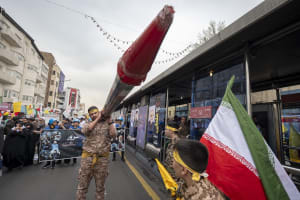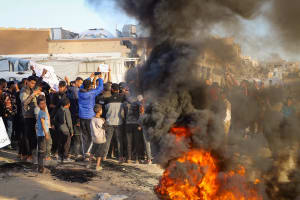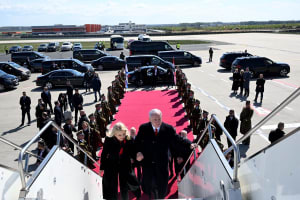The Islamic Revolution-from Tehran 1979 to Gaza 2023

In November 1979, a group of Iranian students attacked the U.S. Embassy in Tehran and seized 52 Americans hostages—a dramatic moment that reverberated around the globe for 444 days. Today, a similar tactic is unfolding in Gaza, where militant factions have abducted hundreds of Israelis on October 7th more than 500 days ago. While the two crises differ in context and scale, both are based on a common ideological framework: the tenets of the Iranian Islamic revolution, whose doctrines continue to influence groups determined to challenge Western countries—and by extension, Israeli’s presence in the region.
The 1979 Iranian hostage crisis was a manifestation for the revolutionary fervor that had overthrown the Shah and set Iran on a new, radically anti-Western path. The hostage-taking was not a random act of violence, but a calculated gesture designed to assert Iran’s newfound Islamic identity and to end decades of Western influence. Revolutionary slogans like “America can’t do a thing” were emblazoned on placards, and the captives themselves became symbols of national humiliation for the United States. The crisis not only exposed the vulnerability of American diplomatic and military power but also demonstrated the willingness of the new Iranian regime to use force and symbolic acts as leverage in international politics.
A verse in the Koran, Qur'an, Suran 8:60, says “And prepare against them whatever you are able of power and of steeds of war by which you may terrify the enemy of Allah and your enemy and others besides them...” remains a battle cry for many militant terrorist groups. Its invocation, whether in Tehran or Gaza, reinforces the idea that the struggle against the West influence is divinely ordained by Allah.
Let’s compare October 7th, 2023, when Hamas and other Palestinian militant groups launched a large-scale attack on Israel, capturing hundreds of hostages—including civilians and soldiers. Although the circumstances differ—a modern urban warfare setting and a protracted conflict in the Gaza Strip—the underlying message remains strikingly similar. Hostage-taking here is deployed as a high-stakes bargaining chip and to galvanize support among Muslim populations, echoing the same revolutionary spirit that once animated Tehran’s dramatic seizure of the American embassy.
Central to this continuity is the ideological legacy of the Iranian revolution. The revolution’s architects, inspired by a desire to purge Iran of Western cultural and political influence, sought not only to reshape domestic society but also to export their model of Islamic governance to the broader Muslim world. Recently we have seen this in Afghanistan and now Syria. In doing so, they adopted religious doctrines as both their compass and their method. For the revolutionary Islamists, Surah 8 in the Koran offers divine sanction for mobilizing all available resources—including hostage-taking—to confront what they view as Western imperialism. In contemporary Gaza, militant groups often invoke this verse to justify their actions and to signal their commitment to an ideological struggle that transcends national borders.
Dr. Mordechai Kedar, a senior lecturer and a long-time analyst of Middle Eastern affairs, has been particularly vocal about this ideological thread. He argues that Iran’s support for groups like Hamas is not solely a matter of military backing but also an effort to propagate a revolutionary doctrine that seeks to challenge and ultimately overturn Western influence in the region. According to Dr. Kedar, the revolutionary ideals of 1979—which emphasized anti-imperialism although imperialistic itself, the establishment of an Islamic state, and the exportation of the revolution—are being repurposed today by Hamas, Hezbollah, the Houthis and others. For these groups, hostage-taking is not merely a tactical maneuver; it is a symbolic act aimed at reclaiming control over lands they view as rightfully belonging to the Muslim ummah, and at sending a message to both their supporters and their adversaries that the age-old struggle against perceived Western domination is far from over.
The comparison between the two hostage crises extends beyond mere symbolism. In both instances, the captives were used as leverage in high-stakes negotiations. The Iranian hostage crisis eventually concluded with the signing of the Algiers Accords, a deal that involved the unfreezing of Iranian assets and marked a severe setback for U.S. diplomacy. Similarly, the current Gaza hostage crisis is intertwined with complex prisoner-exchange negotiations that involve multiple international actors. Both scenarios underscore the willingness of the perpetrators to use human lives as pawns in an ideological contest—a contest in which the goal is to force political concessions and to shape public opinion in favor of a revolutionary cause.
Moreover, the media battle over hostage imagery in both crises reveal how optics and narrative are central to this form of modern warfare. In 1979, televised images of blindfolded hostages paraded by Iranian revolutionaries shocked the world and symbolized the collapse of American diplomatic invulnerability. Today, meticulously choreographed video releases of hostage exchanges in Gaza serve a similar purpose: to provide powerful visual evidence of the militants’ control, to elicit sympathy from their supporters, and to embarrass their adversaries by highlighting perceived failures in hostage rescue efforts. As noted by analysts, the intense focus on hostage imagery is designed to amplify the psychological impact of the crises and to mobilize both domestic and international support for the militants’ broader political objectives.
At its core, the goal of the Iranian revolution was to establish an Islamic state that could serve as a model—an “Islamic pattern” society that would inspire similar transformations across the Muslim world. This objective was twofold: to expel Western influence from Iranian society and to extend Iran’s revolutionary vision internationally. In practical terms, this meant supporting and nurturing militant groups that shared its ideological commitment. Today, groups like Hamas are not simply fighting for territorial control or national liberation; they are part of a broader, transnational effort to revive the principles of the Islamic revolution. By capturing hostages and using them as bargaining chips, they aim to force concessions from Israel and its Western allies, and, ultimately, to reshape the world to be under Islamist governance.
The continuity between the two crises is thus not accidental but is rooted in a deliberate strategy. The Iranian revolution was driven by a desire to assert Muslim autonomy and to challenge the legitimacy of the West. This same logic guides the tactics of Hamas today. By invoking religious doctrine—such as the exhortations of Qur’an Surah 8—and by leveraging the symbolic power of hostage-taking, these groups seek to reclaim what they see as a rightful place for Islam in the global order, whether that means pushing back against Western policies in Europe or dismantling the security apparatus of Israel.
In both cases, the hostage crises have had profound and lasting impacts on the political landscape. The Iranian hostage crisis contributed to a dramatic reorientation of U.S. foreign policy, ultimately weakening Carter’s presidency and paving the way for a more confrontational stance toward Iran under subsequent administrations. Likewise, the current hostage crisis in Gaza is reshaping international negotiations, straining alliances, and forcing Western democracies to grapple with the ethical and strategic dilemmas posed by state-sponsored hostage-taking.
The legacy of these crises, and the ideological currents that underlie them, underscore a simple but powerful truth: the struggle for control in the Middle East is as much a battle of ideas as it is of military might. The revolutionary doctrines born in Iran in 1979 continue to echo today, finding new expression in the tactics and strategies of groups like Hamas. As Dr. Kedar warns, this is not merely a relic of the past but a dynamic and evolving force aimed at redefining the balance of power in the region and beyond.

Aurthur is a technical journalist, SEO content writer, marketing strategist and freelance web developer. He holds a MBA from the University of Management and Technology in Arlington, VA.














